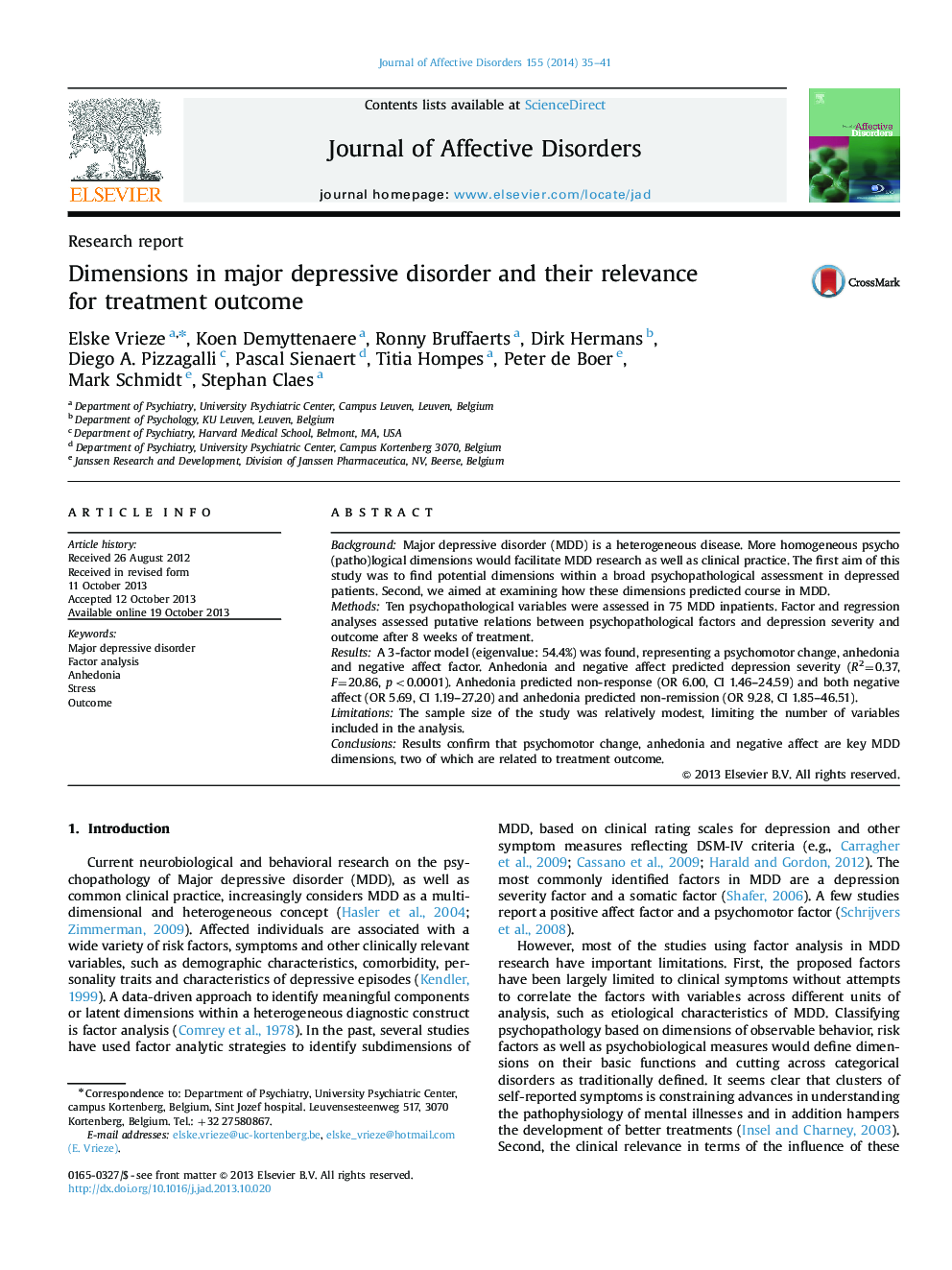| Article ID | Journal | Published Year | Pages | File Type |
|---|---|---|---|---|
| 6233281 | Journal of Affective Disorders | 2014 | 7 Pages |
BackgroundMajor depressive disorder (MDD) is a heterogeneous disease. More homogeneous psycho(patho)logical dimensions would facilitate MDD research as well as clinical practice. The first aim of this study was to find potential dimensions within a broad psychopathological assessment in depressed patients. Second, we aimed at examining how these dimensions predicted course in MDD.MethodsTen psychopathological variables were assessed in 75 MDD inpatients. Factor and regression analyses assessed putative relations between psychopathological factors and depression severity and outcome after 8 weeks of treatment.ResultsA 3-factor model (eigenvalue: 54.4%) was found, representing a psychomotor change, anhedonia and negative affect factor. Anhedonia and negative affect predicted depression severity (R2=0.37, F=20.86, p<0.0001). Anhedonia predicted non-response (OR 6.00, CI 1.46-24.59) and both negative affect (OR 5.69, CI 1.19-27.20) and anhedonia predicted non-remission (OR 9.28, CI 1.85-46.51).LimitationsThe sample size of the study was relatively modest, limiting the number of variables included in the analysis.ConclusionsResults confirm that psychomotor change, anhedonia and negative affect are key MDD dimensions, two of which are related to treatment outcome.
